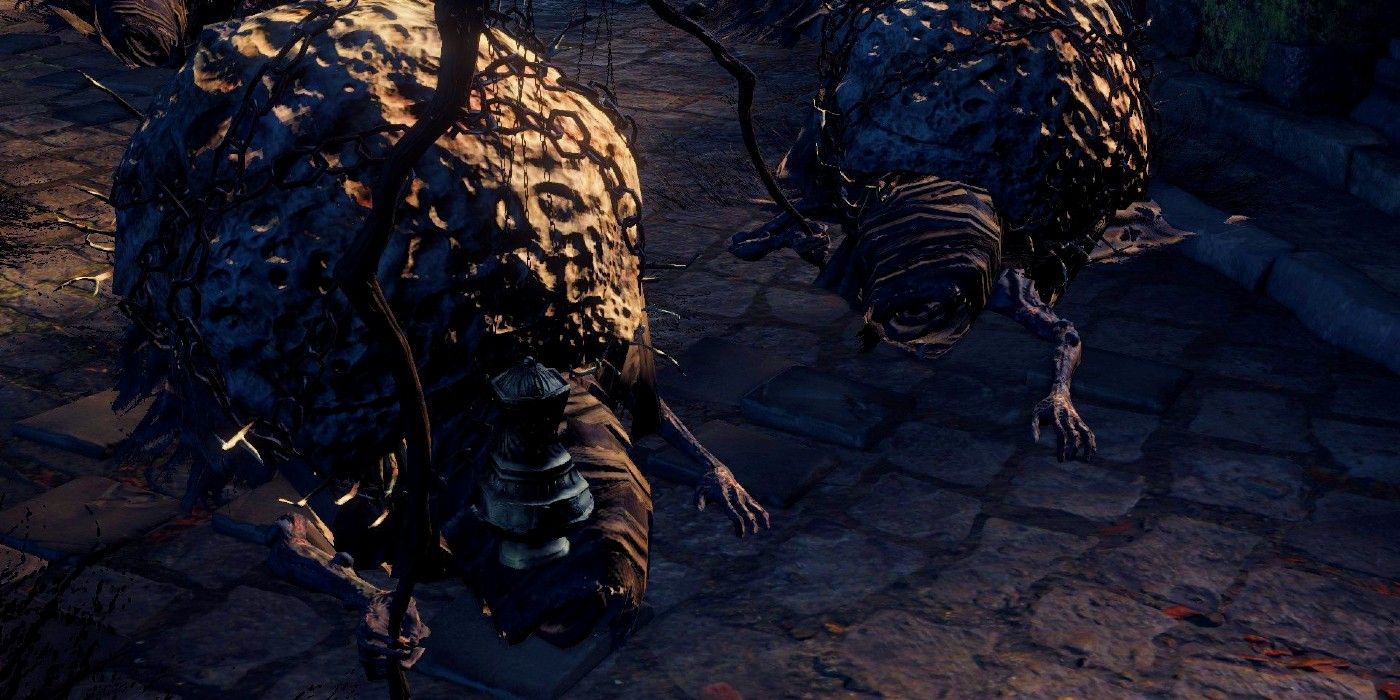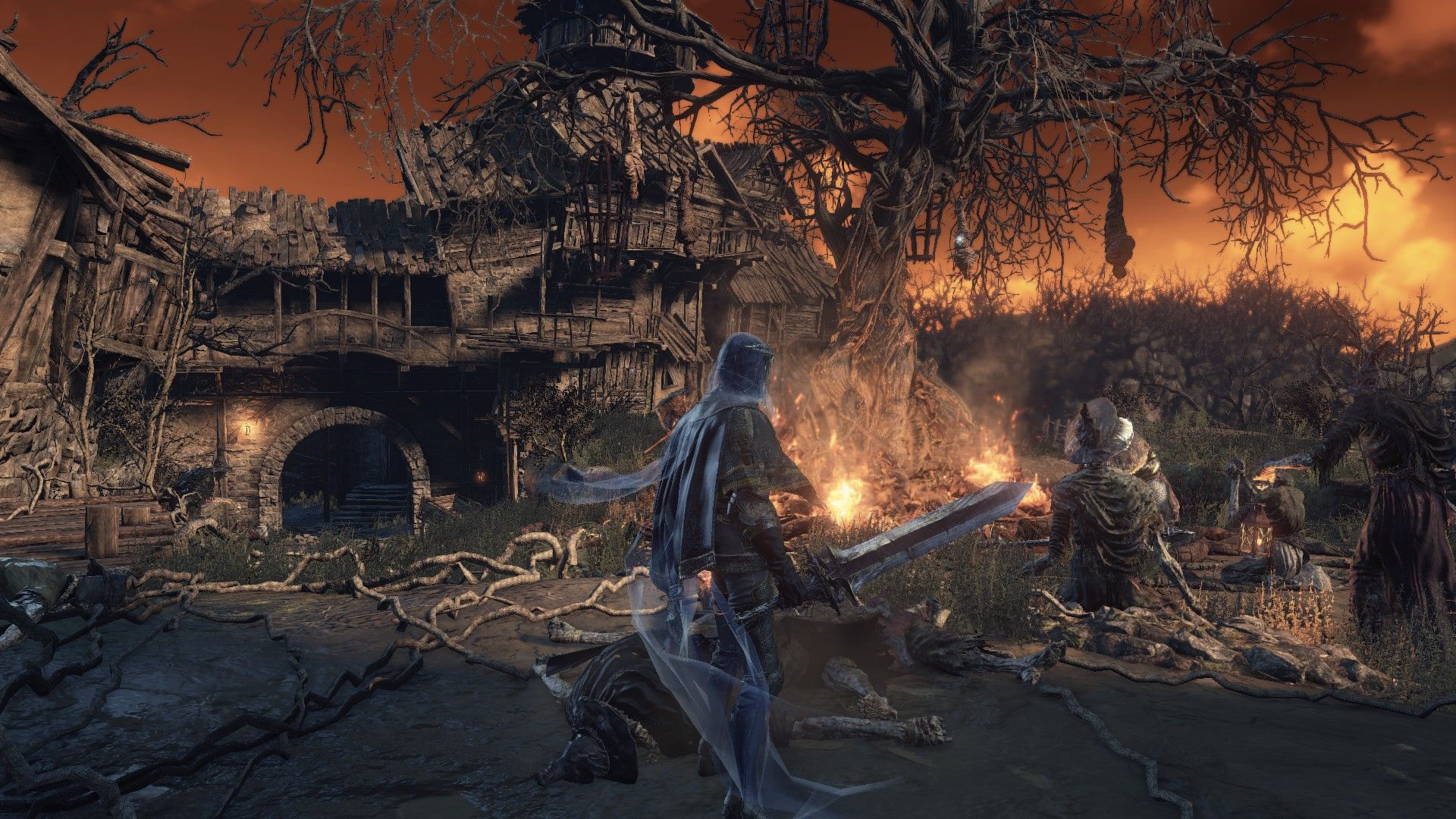FromSoftware's Dark Souls 3 is filled with hollowed enemies. From the dungeons of Irythill to the walls of Lothric, hollows shamble into the player's path. But of Dark Souls 3's many areas, the appropriately named Undead Settlement has a particularly interesting reason for its abundance of undead.
In many ways, the Undead Settlement is akin to the original Dark Souls' Undead Burg. These relatively early areas of the game both depict the lives of peasantry as an Age of Fire diminishes. Those who are downtrodden exist in the dilapidated structures of these townships, continually hollowing just outside the walls of the affluent societies that rule over them. These ruins are meant to provide context to the other areas players encounter throughout the game. It isn't just the outermost walls of Lothric or the Undead Asylum which are subject to the effects of the undead curse, it's the whole kingdom. Unlike Dark Souls' Undead Burg, however, the Undead Settlement provides another layer of lore that the Burg never did. While the Undead Burg introduces the idea of a world infested with hollows, the Undead Settlement shows what happens after generations of hollows exist in the same place for millennia.
The Undead Settlement distinguishes itself apart from its parallels through the religious behaviors of the society that inhabits it. In Souls lore, undead humans undergo a process called hollowing, wherein their humanity is continually chipped away after numerous resurrections. Much like the world itself, which is trapped in an endless cycle of fire and dark, humans are trapped in a cycle of vigorous humanity and hollow undeath. The former is typically preferred to the latter by most (but not all) people, and so in every Souls game hollows are either imprisoned or continuously hunted.
The Lore Behind Dark Souls 3's Undead Settlement
As a result, the near-hollowed residents of the Undead Settlement faithfully dispose of their own fully-hollowed brethren. Evangelist Priestesses lead the settlers in an ongoing crusade against hollows, as hollowed bodies are found in various states of disposal throughout the settlement. Many are stuffed into bags and hung, others are crammed into crowded cages with other hollows. Near the area's beginning, a group of settlers and a priestess can be seen praying at the foot a burning tree with hollows dangling from the branches. The area even opens with a band of settlers unleashing a pack of undead dogs on a group of shambling hollows just outside the settlement gates.
However, the inquisition of hollows is only one side of the story in the Undead Settlement. Though not native to the Undead Settlement itself, hollow pilgrims from the land of Londor are found in a single, massive drove there. The horde is stationed in the opposite direction of the gate to the settlement, standing on the broken bridge to Lothric. Most of them have finally completely hollowed and died except for one, Yoel of Londor. His questline reveals that the pilgrims of Londor are all hollowed undead who travel to Lothric in order to find someone to become their Lord of Hollows, a person who will overcome the cycle of fire and dark that controls the world.
The pilgrims' presence in the Undead Settlement reveals a dual nature about the area along with the wider world of Dark Souls 3. On one hand, the undead curse (and by extension, hollows) are endemic to the world. Hollows will appear no matter where people are, and the natural response from the living is to react with disgust by hunting hollows and abiding by the faith of the gods, who are representative of the Age of Fire. On the other hand, hollows also make their way across the world. They are foreign, and they can abide by their own faith, which looks to hasten the end of fire. Undead themselves only begin appearing as an Age of Fire wanes. This is why hollows are so common in all areas of the Undead Settlement. They are a symptom of the oncoming apocalypse, which the living fear and the undead welcome.


